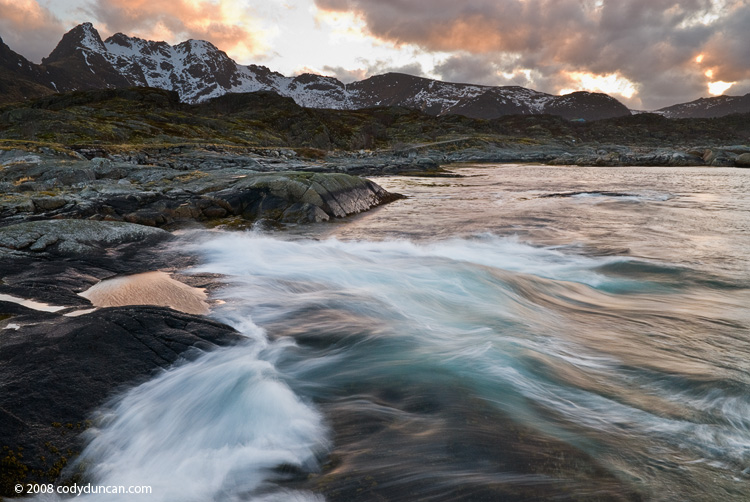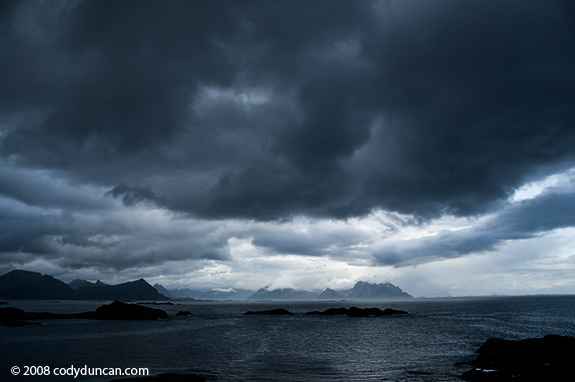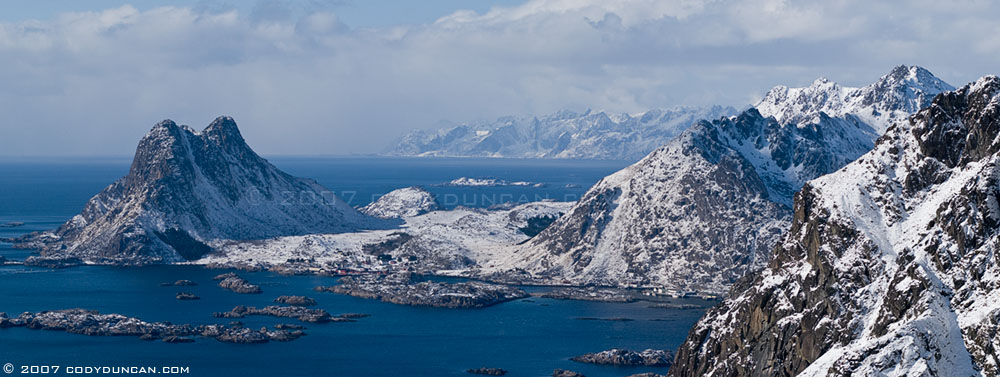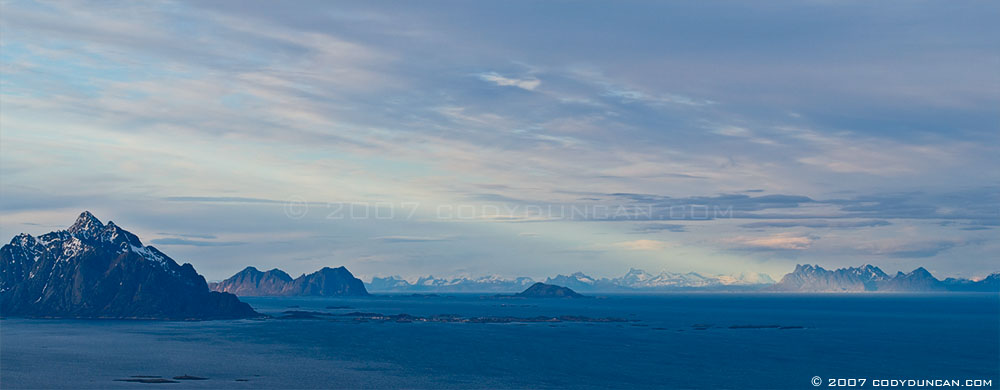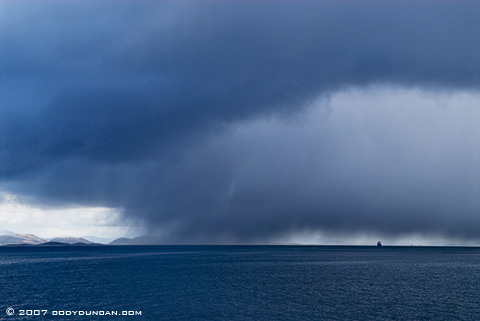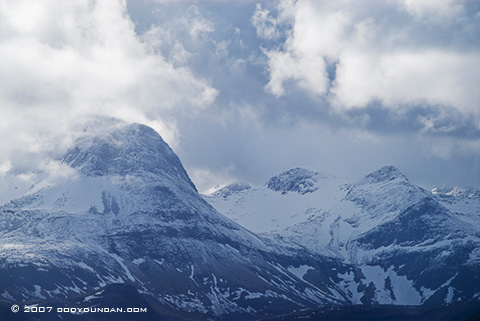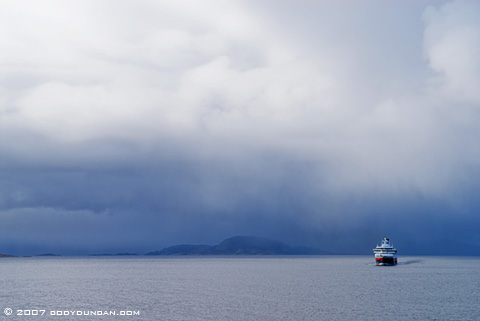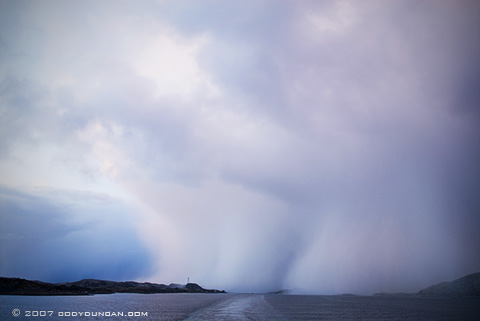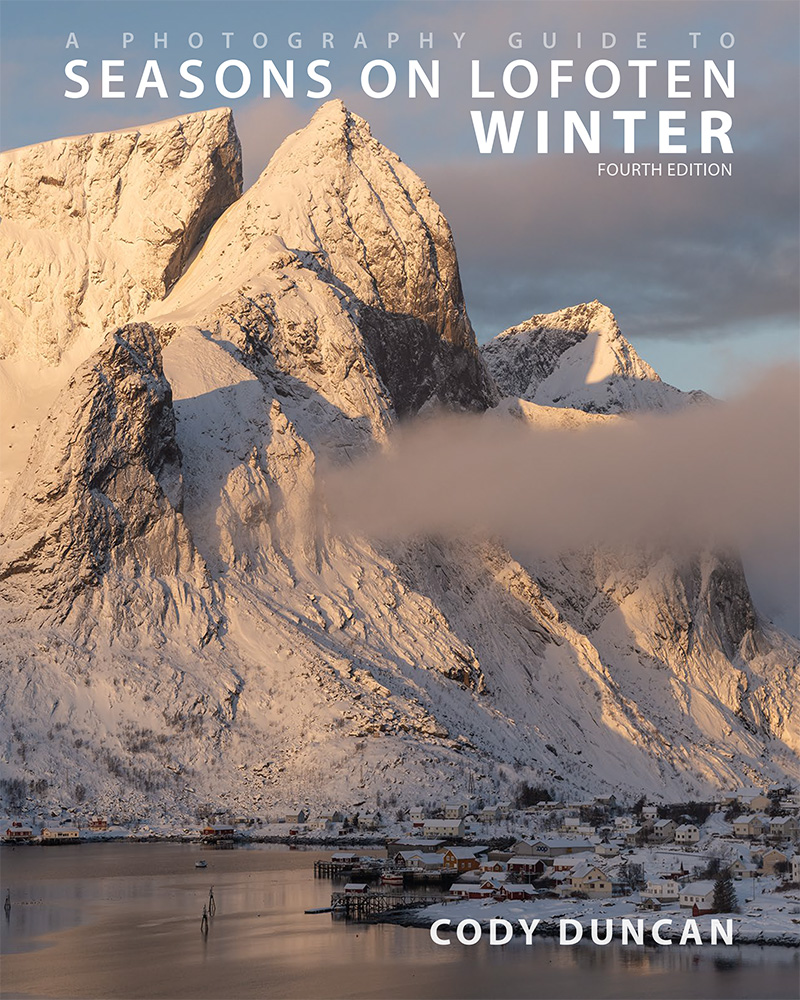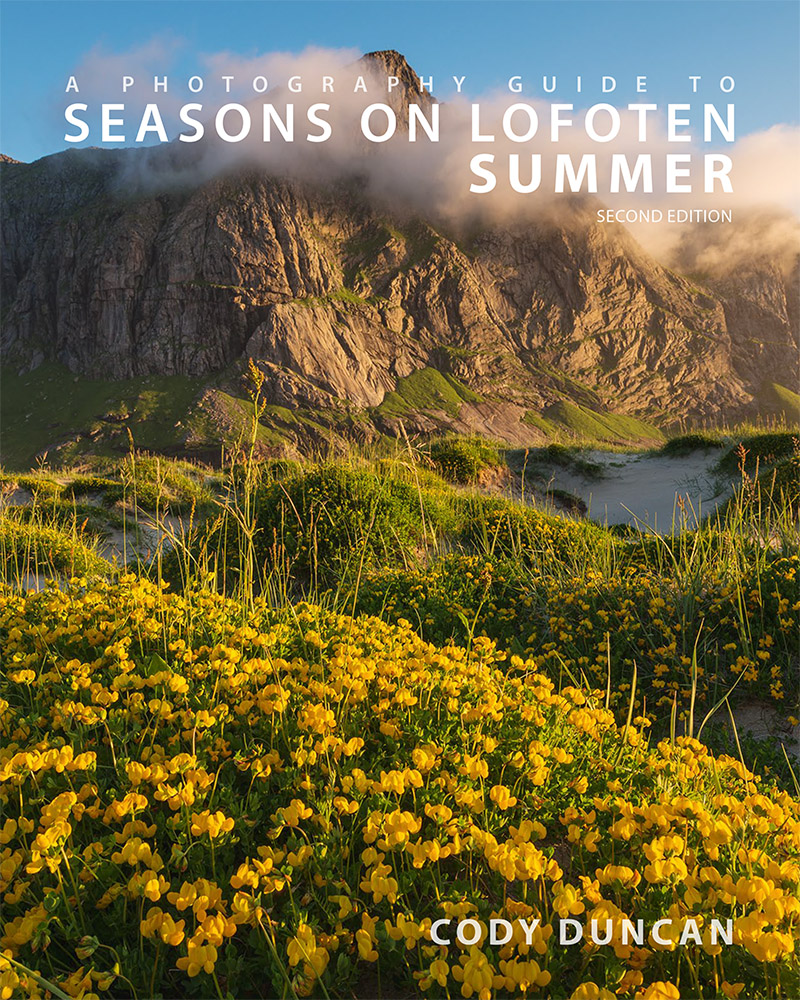April, 2007:
After a couple days of hanging out in Stamsund I got the itch to head off to Henningsvær for the day. Not especially far, distance wise, but with the Norwegian speed limit making a snail look like a formula 1 racer, it would be a few hours journey. I was lucky to catch ‘the boss’ as he was heading into Leknes, so that saved some time walking along the road trying to get a ride; I’ve made it half of the 16km on several occasions before getting picked up; not much traffic during April in this part of the world. Once in Leknes I didn’t really find a good spot to catch a ride, so I headed a few km down the road and waited at the pullout of a bus stop.
Now, in the Arctic, April can still be considered ‘winter.’ Though the Atlantic gulf-stream keeps the islands surprisingly mild for their latitude, one will still want a good jacket or two or three when outside. Anyhow, after sitting around for a bit, an old couple stops to pick me up. In my poor Norwegian I tell them where I’m headed and am told they’re going about half way there, cool! I hop in the car and immediately go from Siberian like temperatures (ok, only around freezing or so) into the Sahara desert which was their car. Having on several jackets and layers of pants, I immediately started to feel myself cooking. So there I was, cruising down the highway at 37.2 mph thinking that my plans for the day maybe weren’t so good after all and how could I get out of this overly hot car.
25km and an hour later, I say my thanks and happily hopped out and into the (refreshing) cold.
At the rate things were going, I figured I’d be hard pressed to make it to Henningsvær and back, so I figured some random wandering would have to suffice. Across the lake was a cool mountain I could go up, but it seemed to be a little more effort than I was interested in. I could also continue walking down the highway and hope to get another ride, but not having a map, and no longer really sure how far Henningsvaer was, I decided to head back a few miles along the road and out to the coast on the north side of the island. Plus, it was sunny there anyhow.
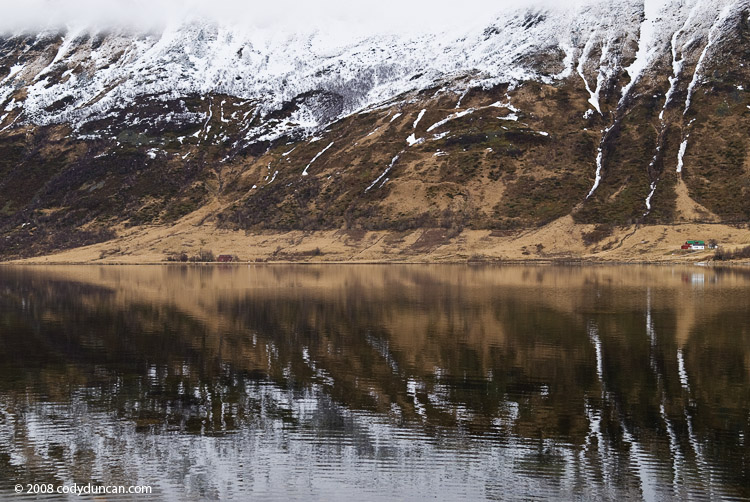
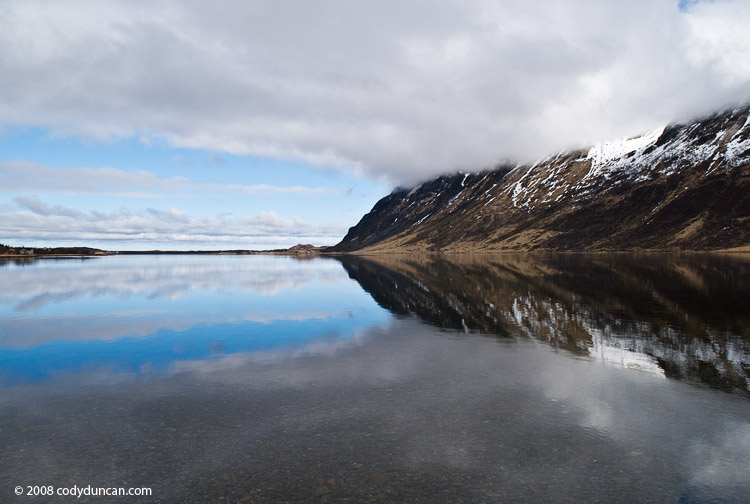
Another two hours later, I walked into the tiny village of Vestresand. Still being winter with the grass still brown, it really looked like a place that had been all but forgotten. I though about stopping into the only store I saw and getting a bar of chocolate to cure my grumbling stomach, but decided against such an idea when I calculated what the markup would be out here in the nowhere lands on top of the already steep Norwegian price for chocolate (and everything else for that matter).
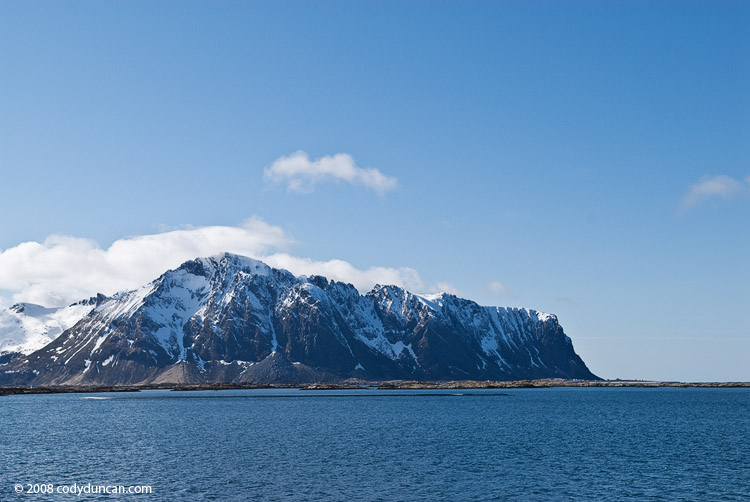
The Lofoten economy runs on basically two things: German tourists in the summer and cod stockfish in the winter. The Lofoten islands are the winter breeding ground for Atlantic cod and Norwegian fishermen have come to Lofoten every winter for a thousand years to fish for them. In the summer, one sees the empty wooden racks, called flakes, that are used to dry the cod. But during the winter months they are filled with fish in various stages of drying. It is a rather unpleasant experience to walk underneath a rack full of fresh fish and be ‘dripped on.’ I wont go into details, but the seagulls seem to follow you after such an occasion, even after several days and washings of the clothes. Most of the fish get shipped off to Italy, Spain and Portugal, while the leftover heads are bought by various African countries.
Back to my wanderings: Vestresand seemed like some quiet ghost town out of a movie. Hardly a person around and nearly perfectly quite. I spotted some old drying racks covered with some old netting at took a wander for some photos. The winter of 2007 was a poor year for stockfish in the old ways. A combination of depleted fish stocks, commercial trawlers and a large processing factory in Stamsund (which also imports cheaper cod from other countries, so I’m told) meant that many a cod rack was left empty. And in Vestresande, this seemed especially true.
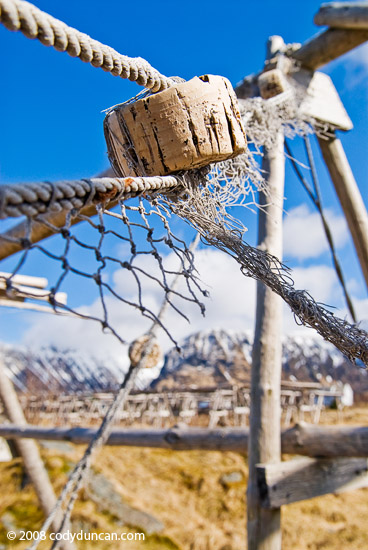

By now, the day was getting late and I figured I better walk back to the highway to start making the journey back. Even though the days of late April are quite long, the traffic (or rather, the 15-20 cars per hour) declines pretty quickly after about 5 in the evening. Luckily, I caught a ride pretty quickly and made it to Leknes in one trip. Now the hard part. It always seems like a black hole of cars while trying to get to Stamsund. I’ve stood on the side of that bloody road for nearly two hours in a horrible storm while car after car passed, and nothing (though I can’t blame them, I probably wouldn’t pick me up eithe,r being completely soaked and looking like a wet dog). I find there’s always a psychological element to hitching as well. I think its much easier to be on some deserted road and get passed by 5-10 cars in an hour as opposed to standing on a busy road and get passed by 100’s of cars, which can be utterly depressing at times. Anyhow, I resorted to walking back to Stamsund and after about halfway I finally got a ride into town and relief for my tired feed. A few days later I would try again, and make it to Henningsvaer.

